ONLINE VACATION
PONCA CITY, OKLAHOMA, USA
12/01/13
Hi Everyone. Our trip today is going to the Midwest. We are going
to Ponca City, Oklahoma.
Ponca City is a small city in Kay and Osage counties in the U.S. state
of Oklahoma, which was named after the Ponca Tribe. It's located in
north central Oklahoma. 25,387 people called Ponca City home at the
time of the 2010 census. The city is near the Arkansas River, the Salt
Fork of the Arkansas River, Kaw Lake, and Lake Ponca, which all
provide numerous recreational opportunities.
Ponca City was created in 1893 as New Ponca after the United States
opened the Cherokee Outlet for European-American settlement during
the Cherokee Strip land run, the largest land run in United States
history. The site for Ponca City was selected for its proximity to
the Arkansas River and the presence of a fresh water spring near the
river. The city was laid out by Burton Barnes, who drew up the first
survey of the city and sold certificates for the lots he had surveyed.
After the drawing for lots in the city was completed, Barnes was
elected the city's first mayor.
Ponca City's history and economy has been shaped chiefly by the ebb
and flow of the petroleum industry. E. W. Marland, a Pennsylvania oil
man, came to Oklahoma and founded the Marland Oil Company, which once
controlled approximately 10 percent of the world's oil reserves. He
founded the 101 Ranch Oil Company, located on the Miller Brothers 101
Ranch, and drilled his first successful oil well on land which he
leased in 1911 from the Ponca Tribe of American Indians. He was
elected in 1932 as a U.S. congressman and in 1934 as governor
of Oklahoma.
Marland's exploitation of oil reserves generated growth and wealth
that were previously unimaginable on the Oklahoma prairie, and his
company virtually built the city from the ground up. Marland and his
associates built mansions to display their new wealth, including the
Grand Home and the E.W. Marland Estate (once called the Palace on the
Prairie.) Because of this period of wealth and affluence, Ponca City
has a high concentration of buildings that exemplify the popular
Spanish Colonial Revival architecture of the period, as well as art
deco-influenced buildings and homes.
Ponca City is named after the Ponca Tribe, part of which was
relocated from Nebraska to northern Oklahoma from 1877 to 1880. Like
all of the forced American Indian removals of the 19th century, the
Poncas' trek was arduous. Followed by the government's failure to
provide adequate supplies, as well as malaria at their destination,
nearly one-third of the Ponca died from illness and exposure.
Ponca City is the site of the Pioneer Woman Museum and the Pioneer
Woman statue. The statue was erected to commemorate women pioneers.
In the early 1920s, E. W. Marland decided to create a statue
commemorating the Pioneer Woman.
Ponca City is home to several landmarks on the National Register of
Historic Places including the Poncan Theatre, the Marland Mansion and
Marland's Grand Home. Ponca City also holds several regional events
each year.
January is normally the coldest month with average temperatures between
24 and 45 degrees Fahrenheit. July is normally the warmest month
with average temperatures between 71 and 94 degrees F. May is
normally the rainiest month with an average of 4.7 inches, and a
yearly average of 33.6 inches of rain. January and February both are
the snowiest months. They have an average of 2.5 inches, and a yearly
average of 8.7 inches of snow.
I hope you enjoy this trip to Ponca City, Oklahoma.
~Marsha~
WELCOME
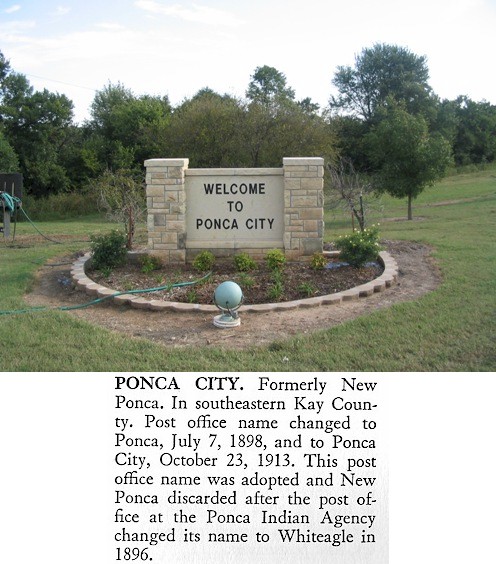
DOWNTOWN


CITY HALL
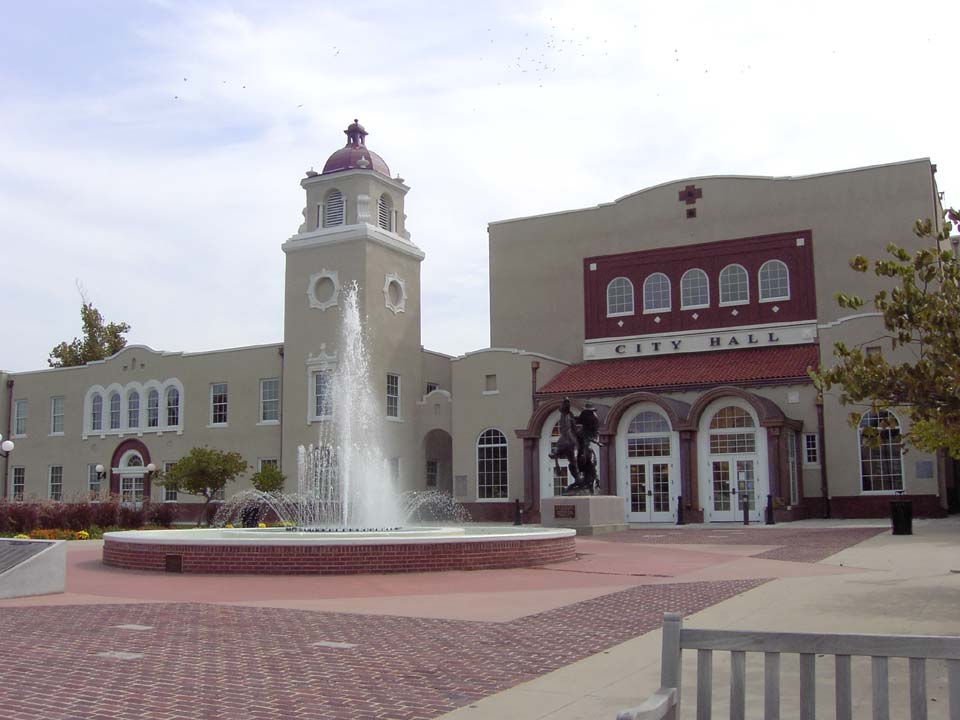

TOWN HALL
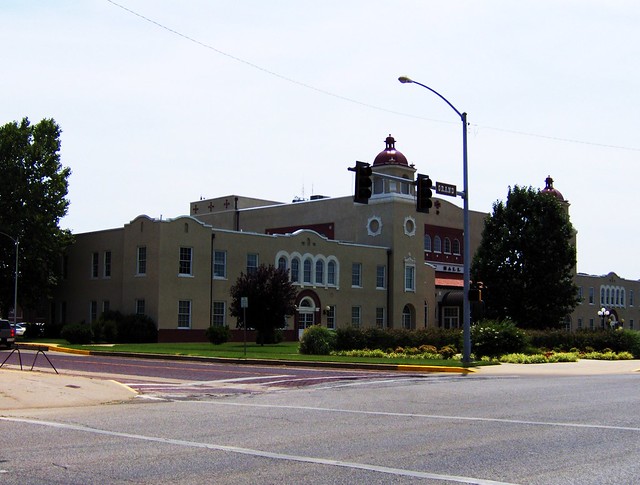
THE MARLAND MANSION






SOLDANI MANSION
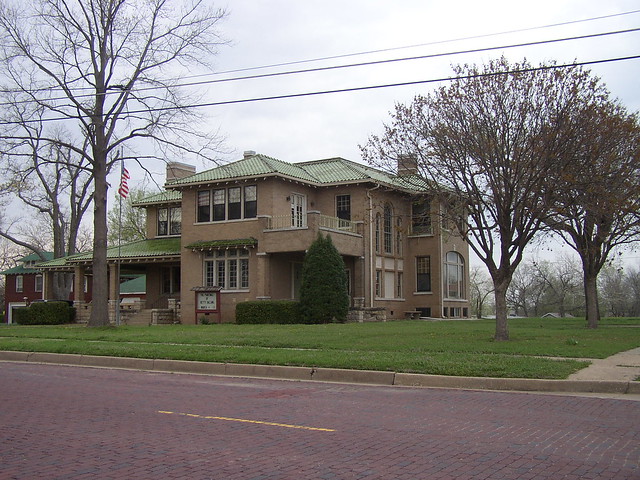
PONCAN THEATER

LIBRARY

HERITAGE TOUR

VETERAN'S DAY PARADE

UNUSUAL SIGN
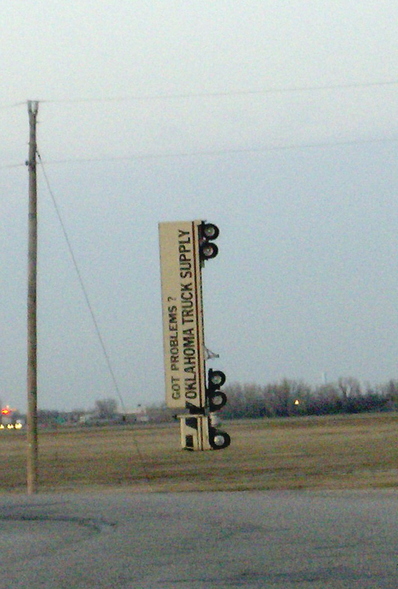
AIRPORT
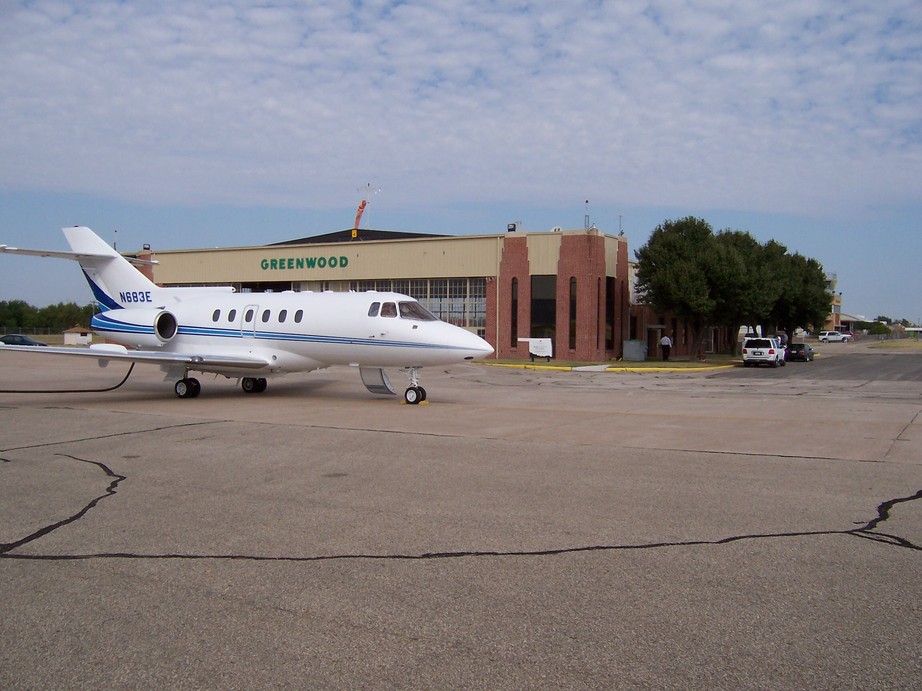
WAR MEMORIAL


STANDING BEAR STATUE
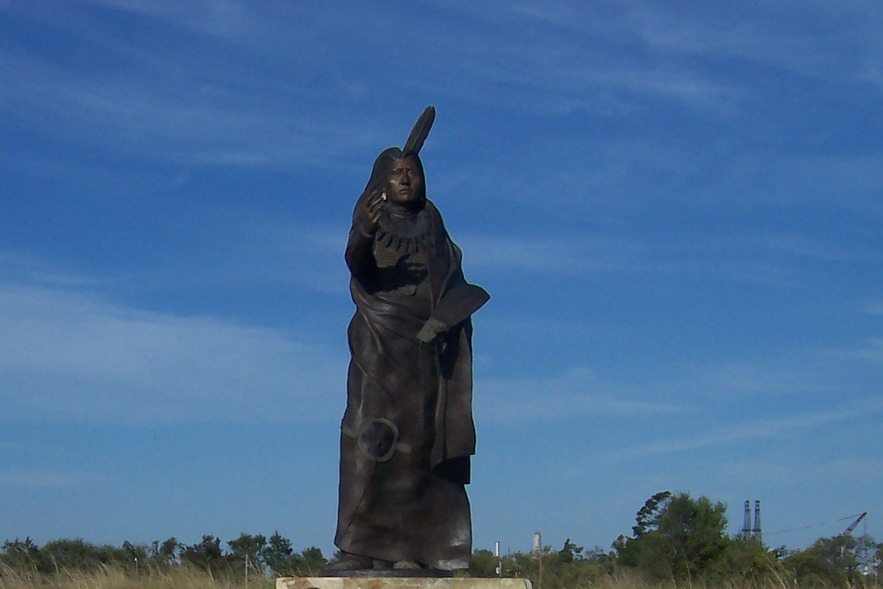
PIONEER WOMAN STATUE

STANDING BEAR POW WOW
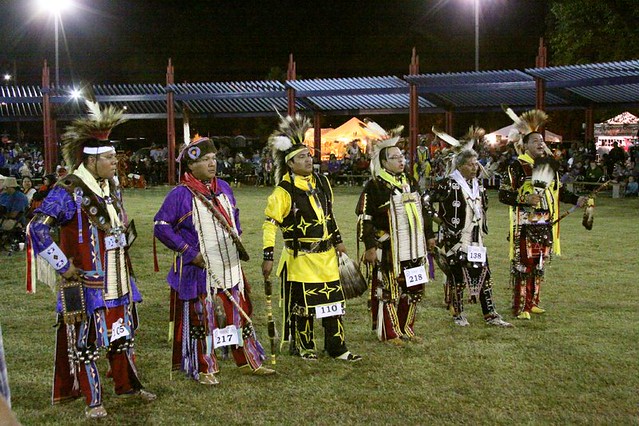

GRAIN ELEVATORS

STATUE
.JPG)
CULTURAL CENTER MUSEUM AND VISITORS CENTER

CONOCO MUSEUM

PLACES TO EAT



ARKANSAS RIVER

PONCA LAKE PARK

WENTZ BOY SCOUT SWIMMING POOL



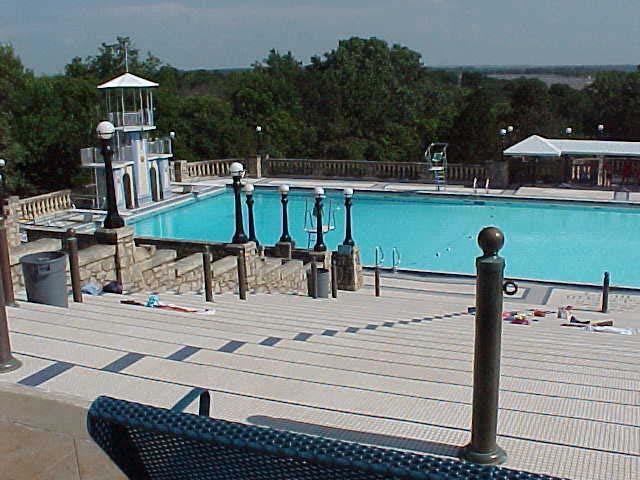
OLD PHOTOS



LOOK AT THE GAS PRICE

1922

HOUSES FOR SALE
 <>
<>

 <>
<>

 <>
<>

 <>
<>

 <>
<>
![]()
 <>
<>

 <>
<>

 <>
<>

 <>
<>

 <>
<>

to Ponca City, Oklahoma.
Ponca City is a small city in Kay and Osage counties in the U.S. state
of Oklahoma, which was named after the Ponca Tribe. It's located in
north central Oklahoma. 25,387 people called Ponca City home at the
time of the 2010 census. The city is near the Arkansas River, the Salt
Fork of the Arkansas River, Kaw Lake, and Lake Ponca, which all
provide numerous recreational opportunities.
Ponca City was created in 1893 as New Ponca after the United States
opened the Cherokee Outlet for European-American settlement during
the Cherokee Strip land run, the largest land run in United States
history. The site for Ponca City was selected for its proximity to
the Arkansas River and the presence of a fresh water spring near the
river. The city was laid out by Burton Barnes, who drew up the first
survey of the city and sold certificates for the lots he had surveyed.
After the drawing for lots in the city was completed, Barnes was
elected the city's first mayor.
Ponca City's history and economy has been shaped chiefly by the ebb
and flow of the petroleum industry. E. W. Marland, a Pennsylvania oil
man, came to Oklahoma and founded the Marland Oil Company, which once
controlled approximately 10 percent of the world's oil reserves. He
founded the 101 Ranch Oil Company, located on the Miller Brothers 101
Ranch, and drilled his first successful oil well on land which he
leased in 1911 from the Ponca Tribe of American Indians. He was
elected in 1932 as a U.S. congressman and in 1934 as governor
of Oklahoma.
Marland's exploitation of oil reserves generated growth and wealth
that were previously unimaginable on the Oklahoma prairie, and his
company virtually built the city from the ground up. Marland and his
associates built mansions to display their new wealth, including the
Grand Home and the E.W. Marland Estate (once called the Palace on the
Prairie.) Because of this period of wealth and affluence, Ponca City
has a high concentration of buildings that exemplify the popular
Spanish Colonial Revival architecture of the period, as well as art
deco-influenced buildings and homes.
Ponca City is named after the Ponca Tribe, part of which was
relocated from Nebraska to northern Oklahoma from 1877 to 1880. Like
all of the forced American Indian removals of the 19th century, the
Poncas' trek was arduous. Followed by the government's failure to
provide adequate supplies, as well as malaria at their destination,
nearly one-third of the Ponca died from illness and exposure.
Ponca City is the site of the Pioneer Woman Museum and the Pioneer
Woman statue. The statue was erected to commemorate women pioneers.
In the early 1920s, E. W. Marland decided to create a statue
commemorating the Pioneer Woman.
Ponca City is home to several landmarks on the National Register of
Historic Places including the Poncan Theatre, the Marland Mansion and
Marland's Grand Home. Ponca City also holds several regional events
each year.
January is normally the coldest month with average temperatures between
24 and 45 degrees Fahrenheit. July is normally the warmest month
with average temperatures between 71 and 94 degrees F. May is
normally the rainiest month with an average of 4.7 inches, and a
yearly average of 33.6 inches of rain. January and February both are
the snowiest months. They have an average of 2.5 inches, and a yearly
average of 8.7 inches of snow.
I hope you enjoy this trip to Ponca City, Oklahoma.
~Marsha~
WELCOME

DOWNTOWN


CITY HALL


TOWN HALL

THE MARLAND MANSION





SOLDANI MANSION

PONCAN THEATER

LIBRARY

HERITAGE TOUR

VETERAN'S DAY PARADE

UNUSUAL SIGN

AIRPORT

WAR MEMORIAL


STANDING BEAR STATUE

PIONEER WOMAN STATUE

STANDING BEAR POW WOW


GRAIN ELEVATORS

STATUE
CULTURAL CENTER MUSEUM AND VISITORS CENTER

CONOCO MUSEUM
PLACES TO EAT


ARKANSAS RIVER

PONCA LAKE PARK

WENTZ BOY SCOUT SWIMMING POOL




OLD PHOTOS


LOOK AT THE GAS PRICE

1922

HOUSES FOR SALE
 <>
<>

 <>
<>

 <>
<>

 <>
<>
 <>
<>
 <>
<>

 <>
<>

<>

 <>
<>

 <>
<>

Information from Wikipedia
This is a MelloMarsha creation
I do not take credit for the pictures
Thanks to the respective photographers
11-30-13
BACK TO THE ONLINE VACATION INDEX